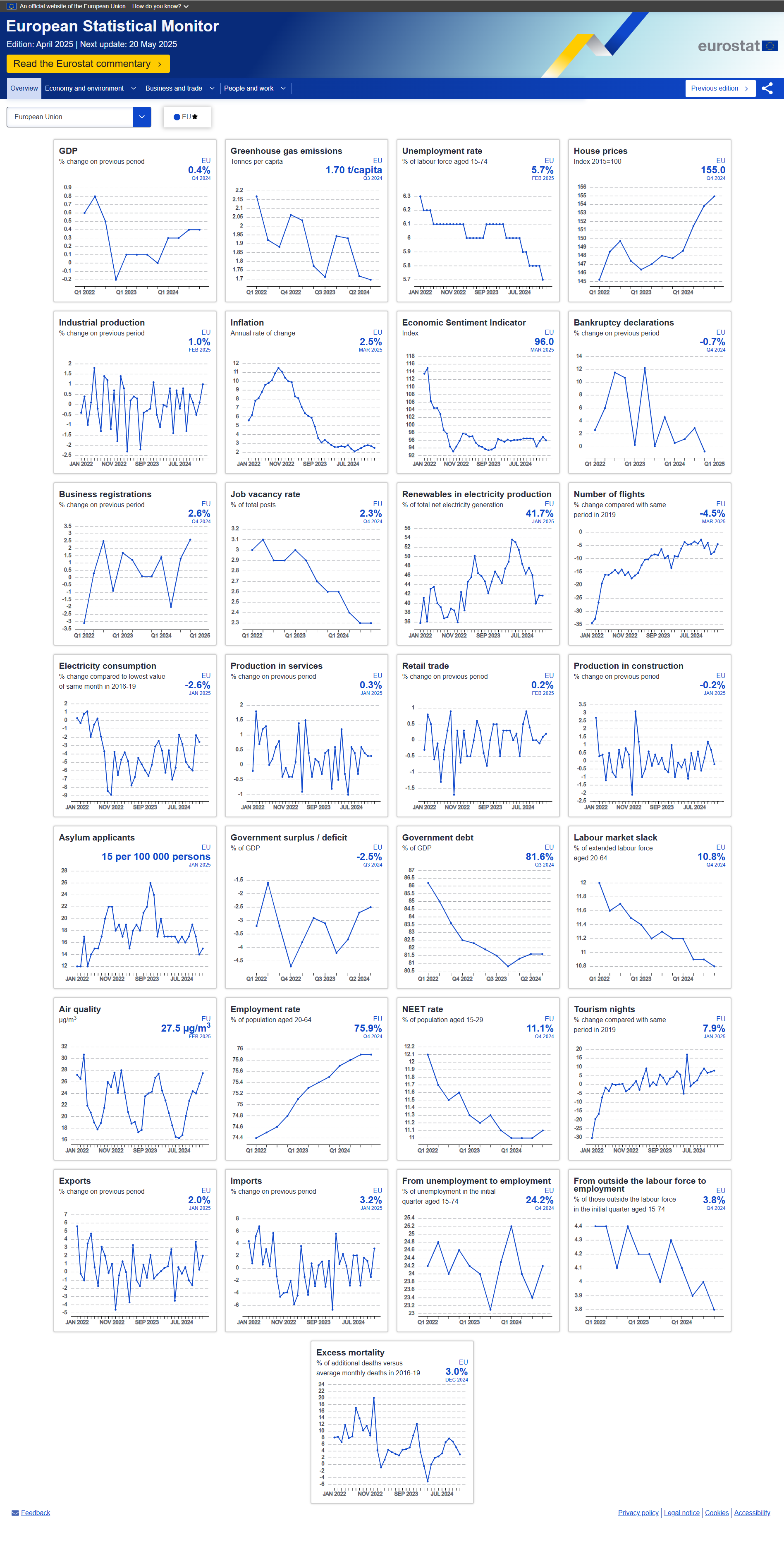European Statistical Monitor: April edition

Today, Eurostat released the European Statistical Monitor, a dashboard with short-term indicators covering different areas, such as economy, environment, business, health and work.
This monthly updated dashboard is designed to track developments within the EU as a whole and its members, as well as the EFTA countries, providing a holistic overview of key developments. It focuses on monthly and quarterly indicators, ensuring up-to-date insights and includes a commentary, focusing on recent changes and trends.
The EU economy stabilises and labour markets remain positive, however economic sentiment declines
According to the latest monthly data, the EU economy shows signs of stabilisation. In February 2025, industrial production continued its recovery, while retail trade remained broadly stable. The services sector maintained its steady expansion, reaching a new historic high in January 2025. Nevertheless, overall economic sentiment dropped in March 2025, driven by lower confidence in services, retail trade and among consumers.
Inflation continued to ease in March 2025, while house prices continued to rise in Q4 2024. At the same time, the unemployment rate fell to a new historic low in February 2025.
First-time asylum applications saw an increase in January 2025, though they remained well below the levels in 2024 and most of 2023.
You can read the full analysis by opening the Eurostat commentary linked in the dashboard’s header.
The European Statistical Monitor is updated every month with the latest available data for each indicator.
For more information
If you have any queries, please visit our contact us page.

